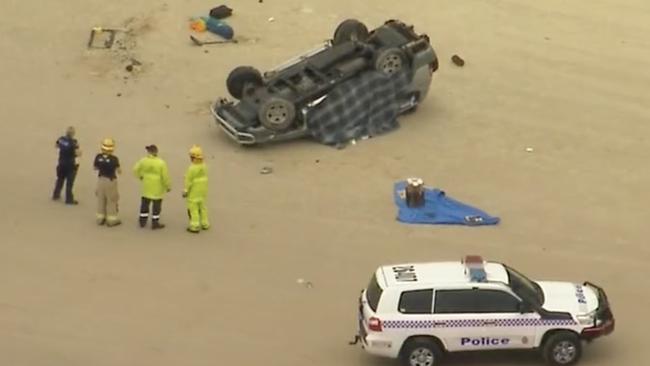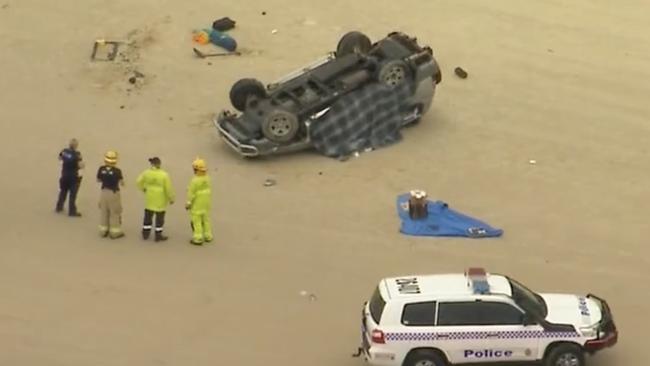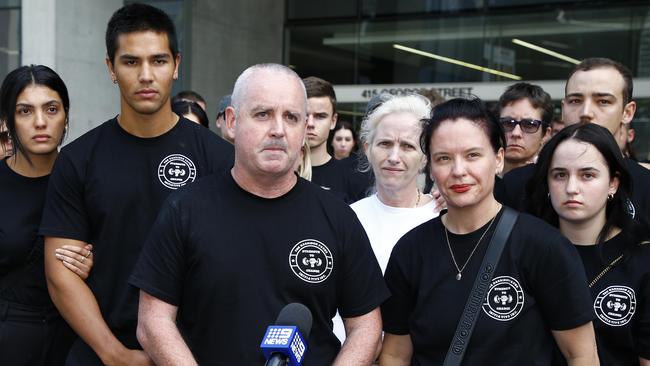University of Sunshine Coast study shows beach drivers take more risks
Drivers take more risks on the beach than on the road because they wrongly think it’s safer, new research shows. We look at the rules, plus the risks and tips to keep you safe these holidays.

Moreton
Don't miss out on the headlines from Moreton. Followed categories will be added to My News.
Drivers take more risks on the beach than on the road because they wrongly think it’s safer, new University of the Sunshine Coast (USC) research shows.
The shock finding that many 4WDers thought it was acceptable to drink drive and not buckle up came after another horrific beach crash on the weekend, in which an international student died in a rollover at Teewah Beach.
The incident prompted fresh calls for the State Government to introduce “Harry’s Law’’ — a new requirement to make P Platers take off-road practical and theory tests before hitting the beaches.
It also focused attention on the dangers of beach driving and the different rules in place.
Most Queensland beaches where 4WDs were allowed are gazetted roads, meaning the usual road rules about drink and drug driving, seatbelts, hooning and inattention applied.
The main difference was the maximum speed allowed — 80kmh.

Many Queensland 4WD beaches and most southeast Queensland beaches also required a permit from the Department of Environment and Science’s parks and forests division. Various fees usually applied.
They could be booked online or over the counter or by calling 137 468.
Surveillance cameras were placed in popular areas to catch people trying to sneak on to beaches.
It was also important to check with your vehicle’s insurer, or the product disclosure statement, as some insurance companies did not cover beach driving or have rule limitations.
VIDEO: HOW TO BOOK A VEHICLE ACCESS PERMIT
USC road safety researcher Levi Anderson said a survey he conducted at Teewah Beach over Easter this year found many 4WDers were experienced on the sand.
Even though most also knew beaches were gazetted as roads, they wrongly believed it was OK to break the rules because it was “safer’’.
“There’s a different mindset people take to the beach. There’s a strong social stigma about driving on the road, but not at the beach,’’ he said.
“It’s the same for drug driving and hooning — many people often share beach hooning videos on social media.
“We found this is because people think there’s a lower risk of getting caught than on the roads and also (they think) there’s a lower risk of injury.
“They see sand as a ‘soft’ environment, but what we saw on the weekend was that it’s actually not a kind environment.
“It’s actually more dangerous. It takes a conscious effort to look out for dangers such as washouts, ridges, hidden logs and other dangers.’’
After a spate of deaths and accidents, new laws were introduced in 2010 and 2011 specifically for hire vehicles on Fraser Island, with $300 fines and three demerit points for infringements.
The rules included no more than eight seats, which all must face forwards.
Since 2010, all hire 4WD vehicle users must store luggage securely inside, not on the roof.
Mr Anderson said many of those surveyed learned risky behaviour from friends or even parents — as well as appropriate skills such as being aware if sand was hard or soft.
Driving experts advised that low range was best suited for soft sand as most diesels needed 2000rpm for maximum torque, or low range third gear.
Tyres should be deflated just before hitting the sand, usually to 16-20 psi. Don’t be tempted to go lower as tyres may come off rims.
Always carry a compressor and pressure gauge, check recommended reading on the driver door or car manual.
The other big safety tips were never to oversteer if a car fishtailed, always wear sunglasses and keep windscreens clean to help spot hazards.
Kent Payne, whose son Harrison died just after his 18th birthday by a hooning 4WD driver at Woorim on Bribie Island, said he was pushing hard for legislation he dubbed “Harry’s Law’’.
“We don’t want to ban P Platers from driving on the beach, let’s be clear,’’ Mr Payne said.
“But what we want is for them to have to take extra theory and practical testing to make sure they’re ready for off-road driving.’’
Mr Payne, who said he was devastated to hear of the weekend’s fatality, has set up the Harrison Payne Initiative to raise awareness and improve education for young drivers.

He and his wife Kylie had a two-hour meeting earlier this year with Transport Minister Mark Bailey, whom he said had been very understanding and open to Harry’s Law.
Coincidentally, the Paynes had previously arranged for Mr Bailey to accompany them on a 4WD educational beach driving trip to Bribie Island this Saturday, November 28.
They were also due to meet Police Minister Mark Ryan in coming weeks and Attorney-General Yvette D’Ath in January, when they would urge her to toughen sentencing laws.
Mr Payne said it was a disgrace driver Lynden Roby served only nine months in jail despite hooning on the beach just before the rollover which killed his son.
Since then the Payne family has poured their energy into The Harrison Payne Initiative, distributing HKP03 bumper stickers, handing out more than 20,000 road safety brochures at primary schools, holding safety awareness days at the beach, hosting fundraising days and selling merchandise to raise money for things such as free driving lessons for learners.

Another USC 4WD beach safety expert, Dr Nicholas Stevens, said that anecdotally off-road crashes and deaths appeared to be trending down but the numbers were still high.
A research paper he published a decade ago found more than 100 injuries and four deaths on southeast Queensland beaches between 2009 and 2015 alone.
“We need to think about whether we can continue to treat beaches like regular roads, where we use traditional enforcement methods to tackle the toll,’’ he said.
“The beach driving environment is complex and changes from hour to hour, but there’s minimal (safety and awareness) signage.
“We need more research and we need to make sure there’s a legacy of improvements from these tragedies.’’





